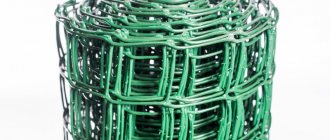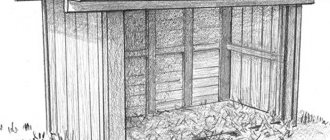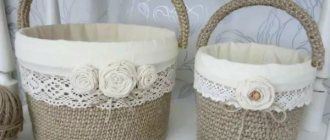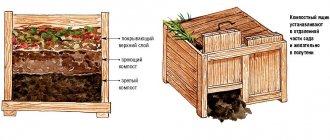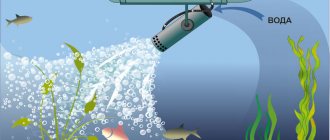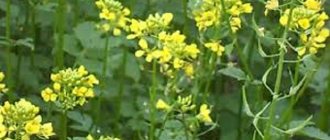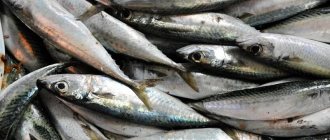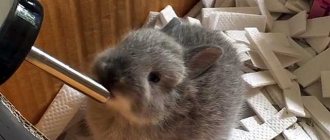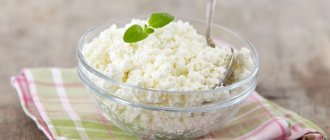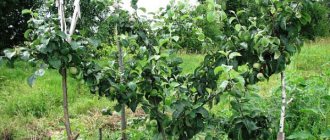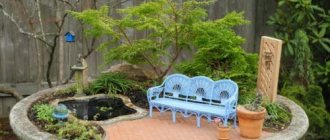Purpose of using the pond
The user needs to decide what purpose the reservoir will serve. You can make a decorative pond or a fishing pond.
For the aesthetic beauty of a country pond, you should fill it with decorative fish, designed to please the eye and relax the soul. It is especially good if there are water lilies and coastal reeds in the pond. The shore can be lined with granite stone. There are a large variety of ornamental fish, which makes it difficult to choose the species needed for a particular pond. But you should focus on such indicators as the size of the reservoir, the fullness of vegetation, oxygen supply, arrangement and suitability for wintering.
For those who love fishing, a large pond filled with fish that will be easy and interesting to catch will be more suitable. Since each fisherman has his own tastes and preferences, the reservoir must satisfy certain needs and the specifics of fishing.
Suitable bodies of water
Each type of fish has a corresponding reservoir that meets different requirements. Limited land use does not always allow for the creation of a large pond. However, the main thing is that he has everything necessary for the normal functioning of the fish being bred.
Reservoirs differ in size, soil composition, water quality, depth, and nature of water supply. However, it is possible to identify common types among them.
One of the types is reservoirs that are used for some agricultural needs, but are also suitable for fish farming, that is, parallel use. There are ponds created solely for the purpose of fish breeding.
Drying and temporary reservoirs formed due to floods, flooded areas, and swamps are not suitable for fish farming.
In natural bodies of water, an increase or decrease in the number of fish and all processes associated with this occur independently and unpredictably.
Reference! In artificial ponds, the direction of life activity is set by man, everything is regulated and controlled by him, this is a distinctive feature of such a pond.
Suitable fish species for pond farming
Fish species are selected in accordance with breeding conditions. The determining factors are air temperature and water composition. The type of pond is important - flowing or standing. When selecting varieties, one should take into account the compatibility of breeds and competition for food. The most unpretentious and productive are considered:
- Carp or carp are heat-loving, but resistant to temperature fluctuations. Diet: plant foods and mixed feed. It reaches sexual maturity at 1-3 years of age, depending on the ambient temperature. Varieties - scaly, mirror and leathery.
- Grass carp is a large relative of the carp. Reaches a weight of 50 kg or more. Homeland - Far East. Eats large amounts of plant food and is used to clean overgrown reservoirs.
- Black carp - similar to white carp, but feeds on shellfish. The scales are dark in color. It sanitizes ponds well from other types of pests.
- White and bighead carp are very similar up to 3 years of age. Then the motley develops spots on its scales. Reach 50 kg. Silver carp feeds only on plants. Motley is more unpretentious.
- Buffalo - similar to carp, native to America. According to the growing conditions, it is similar to carp, but the meat is much more valuable in taste.
- Channel catfish are omnivorous, large, and heat-loving. Homeland America. When fed correctly, it has a very pleasant taste of meat.
Less productive, but amenable to cultivation in a man-made pond, are:
Gold and silver crucian carp are unpretentious and fast-growing. Can interbreed with other fish breeds. Gains weight up to 5 kg. Feels good even with unfavorable water composition.
Trout, pike, tench, and sturgeon are also bred in artificial reservoirs.
Grass carp is one of the freshwater fish species suitable for pond farming.
Fish for a small pond
Decorative
The choice of decorative fish for a country pond is huge. The main thing is to choose the right type of pond fish that will meet the parameters of a particular body of water. The size of the pond, depth and even wintering conditions are important for choosing. The most popular fish for a decorative pond are:
- Name: goldfish (photo on the right). Very beautiful fish, at the same time one of the most convenient for a country pond, since they are the most unpretentious in terms of food, do not require special conditions for reproduction, and do not cause much trouble to the owner. The aesthetic pleasure of this type of fish is undeniable; it is not for nothing that they are so often purchased as aquarium fish.
- cold water trout. Of interest are river and rainbow trout. They are very attractive in appearance and will undoubtedly be able to decorate any body of water. They feed on food mixtures and small waterfowl. These fish do not require complex care, but the downside is that they do not reproduce in an artificial reservoir.
- verkhovka and minnow. These fish are notable for the fact that they swim in schools and create a silvery sheen on the surface of the water. An unusual and attractive sight for lovers of beauty. However, they require a lot of oxygen and in order to keep such fish in your pond you will have to install special equipment that ensures good oxygen circulation.
- decorative Japanese koi carp. Fish of extraordinary beauty and color.
This type requires effort. They need a lot of food, love to swim in deep water, and require space to thrive. Quite aggressive fish, capable of eating smaller fish. They gain weight quickly. But they quickly get used to the person and cease to be afraid of him, and accordingly, they are more often pleased with their approach. And the bright and varied appearance cannot be underestimated.
Alive
Separately, fish that are bred for fishing should be identified. There are other priorities and features when choosing fish.
- crucian carp One of the most common and unpretentious fish. Adapts quickly to changing conditions, does not require great depth, and easily gains weight. It feeds on all kinds of vegetation. It tolerates wintering well; it is enough to make an ice hole for oxygen supply.
- carp. Just like crucian carp, it feels normal in ponds with shallow depths. Easily adapts to being in a body of stagnant water, quickly gains weight due to low activity and conservation of energy. Loves the sun and light. Almost omnivorous fish.
- Carp is the same fish from the carp family, does not require complex care, and gains weight well. An excellent fish for catching and enjoyable fishing, as there are quite large specimens.
- bleak. A small fish, about ten centimeters. But the plus is that it is unpretentious in care, quite active and thereby attracts attention. And most importantly, this fish is very tasty and is considered a delicacy.
- White amur. A large fish that is perfect for a country pond. It gets along well with fish species such as crucian carp, carp, and carp. Easily adapts to standing water.
- gudgeon. Although this fish is not a commercial fish, it will greatly delight children on the estate if they are introduced to fishing, since it is located near the shore and can be caught with the simplest, even homemade fishing rod. Despite its size, it is very tasty fried or dried.
- tench. Medium sized fish. Unpretentious to living conditions. It does not require great depth and feels quite comfortable in water with a low oxygen content. However, it grows faster in larger ponds. The only drawback is that it does not coexist with crucian carp in reservoirs.
The most popular types of fish for keeping in an artificial reservoir
Japanese ornamental carp
Another name for this fish is koi carp. A spotted massive fish that is distinguished by its bright colors and can change them throughout its life. They treat people well and quickly get used to them, but with fish, if they are smaller in size, they can be very grumpy. Aggression, and even eating smaller neighbors, is possible.
Among the disadvantages is the ability to grow up to a meter in length, which in turn imposes restrictions on the size of the pond - such giants will not be comfortable in a cramped body of water. Moreover, they also dig through mud with their nose, like any other carp. So a cleaning system and sufficient depth would be highly desirable. These carps are also known to have a habit of eating algae.
Common carp
They live for a long time, grow very significantly and very quickly, and are also unpretentious - they perceive the lack of food and oxygen very calmly. Carps are often settled in reservoirs by those who from time to time like to treat themselves to fresh fish.
Carp
Another unpretentious species is crucian carp. For a pond, it is worth choosing more spectacular silver or golden individuals. The expectation of a beautiful picture can be spoiled by the fact that they prefer to live near the bottom. At the same time, these fish also winter at the bottom, where they are buried in muddy sediments. In general, the fish is extremely unpretentious and incredibly tenacious. Just like carps, they are suitable for those who want to organize fishing sessions on their property.
gold fish
You should choose not aquarium options with a bushy tail, which are intended for home cultivation and may simply not survive the winter, but their more hardy pond counterparts. In general, this species shares first place in popularity with the koi already described above, and the reason for this is their excellent appearance. At the same time, this type of crucian carp survives the winter well, provided, of course, that the water receives oxygen.
Among the peculiarities of growing goldfish, it is worth noting the inadmissibility of small bodies of water (less than 40 centimeters in depth), as well as small ponds. The thing is that the species grows up to half a meter, and also likes to lift silt from the bottom and eat plants. Thus, a small reservoir will become polluted very quickly, and in order to maintain it in the desired condition, you will need to spend money on a good aeration system.
Comet
A colorful fish, usually distinguished by orange and turquoise shades in color. It is also distinguished by its elongated tail and ability to move very quickly underwater. They feel great in decorative ponds.
Bleak
Like some of the fish species described above, they love to eat aquatic plants. It is distinguished by its high swimming speed, optimal size of 10 centimeters and rapid body shape. In the conditions of reservoirs in the country or in local areas, these types of fish demonstrate their extreme unpretentiousness. The fish are often bred for fishing.
Tench
A peace-loving fish leading a sedentary lifestyle. It tolerates the company of other species well, with the exception of crucian carp. At the same time, it is extremely unpretentious to conditions, including depth. However, in the case of a large reservoir, and therefore a large area of the water surface, it can grow very strongly. And in general, this creature is growing in size very actively. Suitable for fishing.
Cold water trout
The fish looks great and is also easy to care for. The undoubted disadvantage is that it does not reproduce under artificial conditions. It readily consumes feed mixtures as food, but in natural conditions it can exhibit predatory tendencies.
Number of fish in the country pond
The pond should be filled with fish not only taking into account their ability to get along with each other, but also pay attention to their numbers. If there are few fish, then its main purpose will not be fulfilled, that is, it will not be possible to experience full aesthetic satisfaction or joy from fishing. If the pond is overcrowded, then nothing good will come of it either; the survival rate of the fish will significantly decrease.
The optimal amount of water for one medium-sized ornamental fish is approximately fifty liters. Accordingly, it is easy to calculate the required amount of fish for a specific pond based on its size.
In a fishing pond, there are on average fifteen fish such as crucian carp per 1 cubic meter of water.
Launch and content
Microclimate
Before introducing fish into a reservoir, you must carefully consider this event, since it is important for the subsequent existence and reproduction of fish in an artificial reservoir. Before filling the pond with fish, it should already contain various plants suitable for its nutrition and supplying the water with oxygen. There should be food and mixtures for fish in stock in order to be able to provide it with regular nutrition. Before launching fish, the reservoir should settle and warm up properly. At the same time, the fish must be released in stages. First, you should measure the temperature of the pond and the temporary residence temperature of the fish. The temperature in the pond should be no lower than 14-16 degrees, only then can fish be introduced. The temperature in the container containing them must correspond to the temperature of the body of water into which they will be released in order for acclimatization to take place successfully.
Fish feeding
The fish needs to eat twice a day, at the same time, for which the fish must be accustomed to the regime with the same simple signals. For example, hitting a stick against a stick. Various mixed feeds and cereals are used as feed, which are also fed to livestock. It is possible to feed peas and other legumes, this is especially true for the carp family. Although fish are almost omnivorous by nature. They also feed on plants in the pond. During times of stress, for example at the time of launching into a pond, you should not give a lot of food.
Water quality
The quality of water plays an important role in ensuring adequate conditions for fish in a summer cottage pond. A normal level of acid-base balance is essential. The optimal indicators are 7-8 units. Any deviations from the norm are detrimental to the inhabitants of the reservoir. If the water in the pond is acidic, that is, the indicators fall below acceptable levels, then the acidity level should be increased using slaked lime. In the opposite situation, when the alkali increases, you need to use special peat tablets. The acidity of water can be determined using litmus papers or drop testers. It is necessary to check the balance of the reservoir regularly, as indicators may change and deviate from what should be expected. In addition, the water should be free of any tastes or odors. There should be no chlorine or various impurities.
Oxygen
Most fish need a good supply of oxygen, which is one of the sources of natural life. Certain types of fish are especially sensitive to the amount of oxygen in the water and for them the pond should be equipped with an oxygen circulation device.
Important! In winter, make ice holes and holes around the perimeter of the reservoir so that oxygen flows in sufficient quantities. If the fish do not have enough oxygen, the pond will become polluted very quickly.
How to raise fish in a home pond
If there is free space on the site, it can be used for arranging a pond and breeding aquatic pets. In addition, such a pond can have not only practical, but also decorative value: if a mini-waterfall or alpine slide is installed on it, such a pond will become a real decoration of the site.
But most often, home ponds are used specifically for breeding and further catching fish for food. It is important to properly organize the conditions for reproduction and growth of the livestock, and to choose the right breeds that will easily take root in your pond.
You will learn more about breeding from the video.
What you need to know
To regularly get a rich catch, you need to know exactly how to breed fish in your home pond.
This process has some peculiarities. First of all, you need to properly build an artificial reservoir that is comfortable for fish not only in summer, but also in winter. The depth of the pond should be at least 120 cm, but if possible, it is advisable to make the pond deeper. This is necessary, since in severe frost the water will simply freeze and the individuals will die.
Note: In winter, holes must be made in the ice so that pets do not suffer from lack of oxygen. If you are planning large-scale breeding, it is better to immediately install a water pump or air compressor.
The size of the pond directly depends on the number of livestock that will be in it. For example, for small breeds (up to 10 cm in length) you need a pond with a water volume of 50 liters, and if the fish grows larger, then you will need a much larger pond.
Other important breeding points include:
- Adjusting the number of livestock is necessary, since if the pond is overpopulated, individuals will begin to get sick or fight for food, which will ultimately lead to the death of some individuals. To prevent this, part of the livestock will have to be caught for sale or consumption.
- The correct selection of material for the walls and bottom of the reservoir also plays an important role, since it must be absolutely safe. For this purpose, it is better to choose high-quality film or special coatings for artificial reservoirs. The bottom must be covered with a layer of sand and gravel with underwater plants, which will not only create comfortable living conditions for the fish, but also provide it with additional food.
- Feeding should be moderate, and active complementary feeding is recommended only in summer or spring, when underwater inhabitants grow and develop. After feeding (after about 10 minutes), the remaining food is caught from the surface of the water so that it does not spoil and cause the water to rot. In the fall, feeding is stopped, since when the temperature drops below 10 degrees, the fish completely stop feeding.
It is important to properly relocate purchased fish to a new body of water. To do this, it is placed on the surface of the water for a while directly in a transportation bag and only after that is released directly into the water. This is necessary so that the fish adapts to new temperature conditions and does not experience shock. Under no circumstances should individuals caught in the river be released into an artificial pond. They can be infected with dangerous diseases and become a source of infection for other individuals. It is recommended to buy fish for home breeding only in specialized farms or pet stores. If you find a sick individual (lying on its side, swimming strangely, rubbing against objects, and a white coating has appeared on its body), be sure to isolate it and carry out preventive measures with other individuals.
Peculiarities
Many people think that raising fish in a pond on their property is difficult, but this task is quite simple and can be done by anyone who knows the basic features of cultivation.
Figure 15. Basic requirements for home ponds
It is best to stock fish in an existing, natural reservoir located on the site. If this is not the case, dig the pond yourself. The main feature that will help to equip an artificial pond in the country is the correct selection of the variety.
So, what kind of fish can be grown in a pond at the dacha? The best breed is considered to be carp, which feels good in small bodies of water and quickly gains weight, as it spends less energy searching for food.
Note: A small pond is also convenient for the owner, since such a pond is much easier to care for.
For breeding carp or crucian carp, a pond measuring 4*6 meters and up to one and a half meters deep will be sufficient. To determine the optimal number of individuals, you need to calculate the volume of the reservoir. Based on this indicator, no more than 20 individuals are populated per cubic meter of pond water.
Another advantage of a small reservoir is the fact that the water in it quickly warms up, which has a beneficial effect on the growth and development of carp. The optimal temperature is considered to be within 24-26 degrees. If this indicator is higher or lower, the pets’ basic life processes will slow down, they will stop eating and growing.
Rules
Breeding fish in a home pond is not a difficult task, but it still requires compliance with certain rules.
The main nuances that should be taken into account are (Figure 15):
- The bottom and walls of the pit must be well leveled and compacted, and it is advisable to additionally cover the bottom with cement;
- The bottom of the reservoir can be covered with film or old tubes from truck wheels, and if you plan to grow not only fish, but also crayfish, you need to place old pots or pipes on the bottom in which the crayfish will hide during molting;
- To fill the pond, you can use any water: well, spring or even tap water. But it is not recommended to stock fish immediately, since the liquid must warm up well in the sun, stagnate slightly and become colonized with microorganisms.
To speed up the process of preparing water in a pond for settlement, you can pour several buckets of water into it from another artificial reservoir in which fish are bred or place a bunch of grass at the bottom.
What conditions should there be for fish in a pond?
For normal life, fish need to create optimal conditions. First of all, this requirement concerns acidity: its value should not exceed 7-8 pH.
Note: If the pond's acidity is too low, you can always increase it by adding a solution of soda or limestone.
Temperature also plays an important role. Before moving in, you need to equalize the temperature in the pond and in the containers in which the individuals were transported. This will help reduce the risk of developing temperature shock and prevent the death of young individuals in the first day after relocation.
Keeping fish in an artificial reservoir also involves feeding them to accelerate weight gain. Omnivores, such as carp, can be fed with any food, but preference should be given to feed for poultry and pigs.
Dry food is mixed with water to form a thick porridge, and mixed feed can be replaced with cereals or legumes. They are steamed and given out in a swollen form. It is advisable to feed the fish at the same time, and pour the food onto a certain area of the pond. It is advisable to equip special feeding trays for this purpose. They are easy to remove from the water for cleaning, and the use of such devices will help control the amount of uneaten food and prevent acidification of the water.
Arrangement of a country pond with your own hands
Unlined pond
To build a pond (and the main dwelling) on your site, it is advisable to invite surveyors (specialists) who will determine the presence of groundwater and its maximum proximity to the surface, so that when constructing a pond at this location, the pond is replenished with spring water. If the site in the country has close groundwater, then the most suitable option would be to develop an unlined reservoir for fish farming.
You should start by laying a clay or film trench, which in the future must be periodically cleaned and replaced. Be sure to take into account all the features of the terrain. So, if the area is sandy, then the bottom and walls of the future pond must be strengthened with clay, or rather with clay mortar, the thickness of which should be at least 12 centimeters. After which it is covered with turf or, alternatively, straw. The existence of any depression or ravine on the territory will facilitate the task of creating a reservoir. It will need to be made deeper and wider. Then you need to block the dam along the entire pond. It should rise above the surface of the water by about half a meter. You will also have to make a bypass ditch. Otherwise, the entire flood will go into the country pond, which can deteriorate the quality of the water and harm the farmed fish.
The bypass ditch is constructed using concrete gutters. And the bottom of the reservoir is usually filled with crushed stone or fine gravel. A shoreline is formed along the perimeter of the pond. It can be quite wide, up to a meter. There should not be too much sand, otherwise the entire aesthetic idea will be spoiled.
Note! Immediately after preparing the pond and filling it with water, fish should not be introduced. It is necessary to wait one and a half or two months for a muddy surface to form at the bottom and for pond plants to take root.
Then the water is drained and new water is added. All this takes a lot of time, but to make the process faster, you can pour several buckets of water from an existing one inhabited by fish into the newly created reservoir. An alternative method is to sink a wilted bunch of grass to the bottom of the pond.
Pond with concrete bottom
A reliable, durable and beautiful pond on your personal plot will be achieved if you make it on a concrete base. These reservoirs can be of various shapes, both regular and irregular. The arrangement of such a pond should begin with identifying the territory and digging a pit. Then the bottom is scrupulously cleared of roots, debris and rubbish and properly compacted. Along the way, they indicate the places where the plants will be planted. Before the pit is filled with concrete, a pipe is laid for wintering fish, the so-called wintering well. Next, the bottom is covered with wire rod and the dug pool is filled with concrete so that the wire mesh is in the middle of the concrete covering. When the base of the future pond has been prepared and poured with concrete, they begin to pour the walls, which are positioned at a slope relative to the bottom. It is recommended to install waterproofing using roofing felt laid on uncured concrete. This is required for greater structural strength and improved quality characteristics. Upon completion of all the above work, when the concrete is completely dry, the pond is filled with water, for which it is possible to use a central water supply. Its pipe is disguised in stones or depicted as a fountain. It is also advisable to prepare a pipe on one side to drain excess water. The pond itself is decorated with all kinds of boulders and stones; you can add any statues and figures to suit your taste.
Preparing the pond to welcome new residents
In the article Do-It-Yourself Fish Pond, it was already discussed that after the first filling of the pond, the water must be drained and refilled with fresh water after some time. To make the water in the pond “alive”, suitable for settlement, several buckets of water from a reservoir where fish already live can be poured into the pond within a week or two. This will create an optimal microclimate that is familiar to new residents.
Important! Be sure to check the pH of the water. The acidity of the water should be within 7-8 units, that is, neutral or slightly alkaline. At pH 6-5.5, water must be deoxidized by adding lime or baking soda.
To ensure that the fish do not receive heat shock during relocation, the container in which they were transported should be lowered into a pond in shallow water. At the same time, immerse approximately 2/3. Wait until the water temperature in the tank and in the pond equalizes and release the fish.
Creating conditions for fish in winter
Preparations for wintering must begin in advance. Before the leaves fall, the pond should be covered with a net to prevent leaves from falling into it. Otherwise, the leaves will begin to rot at the bottom of the pond, and this will significantly harm its inhabitants and appearance. Fallen leaves from the pond must be caught with a net. However, with the first frost, the net should be removed, as it may freeze into the ice covering the pond.
Particular attention is paid to cleaning the bottom. Moreover, this procedure is mandatory for both wintering and non-wintering reservoirs. To clean the pond, use a regular rake.
All auxiliary equipment is removed from the pond, washed in a saline solution, dried and stored until spring. If there is equipment that protects the pond from freezing, then it is left in place.
Small ponds are not left to overwinter. If the pond is about 20 square meters and no more than a meter deep, then regardless of whether it is natural or artificial, it will freeze completely. Therefore, its inhabitants, fish and plants are removed from such ponds, and the water is drained. Then the walls and bottom are cleaned. However, in the winter the pond is partially filled with water to prevent a lot of snow from accumulating in it. An ice hole is cut to create an air cushion. Ponds of large areas are left to overwinter, but all equipment is also removed before spring.
Fish is also prepared for winter gradually. In autumn, the amount of feed is reduced compared to summer. And in winter, the fish are not fed at all, since at this time they must obtain food on their own. You must understand that in a reservoir whose depth is no more than one and a half meters, in winter the fish will freeze and will not survive. However, if we are talking about ornamental fish, then in principle they do not stay in the pond for the winter, being by their nature heat-loving creatures. Accordingly, they must be transferred to the aquarium. But expect the aquarium to be large, with 10 liters of water per fish, and equipped with a filter, as well as an oxygen circulation system. If it is not possible to place the fish in an aquarium, you can use a large barrel instead. But the water should be about 15 degrees. The living conditions of the fish should be made very comfortable, since for them moving from their usual body of water is stressful. But the water should not be made too warm, otherwise the fish will not be able to live in the pond when the time comes to return it there.
If the fish stays in its own reservoir for the winter, then a special wintering well or wintering pit up to 2 meters deep must first be conceived and equipped in it. It is advisable to equip the pond with a water heater to maintain optimal temperature in winter. However, when this is not possible, the solution is to cut a small hole in the ice and periodically pour boiling water over it. It is worth keeping in mind that it is strictly forbidden to cut out an ice hole with an ax, since the shock wave can harm the fish. For wintering, a plant such as reed should be left in the pond, due to the fact that, due to its structure, it serves as an excellent conductor of oxygen, which fish especially need under ice.
Important! In winter, put logs or rubber balls into the pond, otherwise the ice may damage the walls of the pond.
In severe frosts, the pond should be covered with straw, burlap, boards or other improvised objects, but if fish winter in it, then it is not worth covering for a long time, because fish need light for normal life. In addition, in winter, the pond must be systematically cleared of snow and the condition of the ice holes must be checked, cleaned, and prevented from freezing.
Feeding the fish
Fish are able to obtain food for themselves even in artificial reservoirs, eating plants and looking for something edible for themselves in bottom sediments. If the pond has the necessary ecosystem and not a very large number of fish, then it will need to be fed much less often. But this process is still necessary, and first of all we want to understand the menu of the inhabitants of our local pond.
What to feed the fish
As we said above, many fish are omnivores, so almost any compound feed sold on the market can be suitable for satiating them. In pet stores you can easily find everything you need to keep your pets well-fed, choosing one or another type of food depending on the population of the pond.
There are also alternatives for self-cooking, basically consisting of a variety of cereals and cereals, to which are added mineral components, such as the well-known chalk. Recipes can easily be found on the Internet, and they are very diverse.
Feeding method
The ideal solution is to feed the fish twice a day at the same time. The food itself can be turned into dough and thrown into water. You can use a feeder, which is simply made from a small basin with the bottom punched in several places. In this case, a rope is tied to the structure, which helps lower the food to the bottom.
Important! Look, the fish eat this or that food so well. If in some cases the inhabitants of the pond take food around the water area and do not eat, then the remains should be removed in order to keep the habitat clean.
